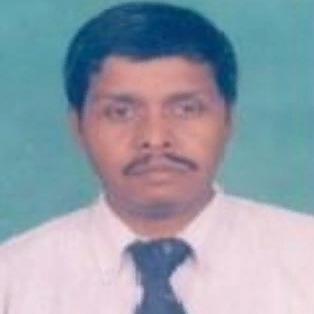International Journal of Wireless and Microwave Technologies (IJWMT)
IJWMT Vol. 8, No. 2, 8 Mar. 2018
Cover page and Table of Contents: PDF (size: 774KB)
Lattice-Reduction-Aided Equalization for V2V Communication Channel
Full Text (PDF, 774KB), PP.64-73
Views: 0 Downloads: 0
Author(s)
Index Terms
MIMO, Capacity, ZF, MMSE, LLR
Abstract
World is moving towards the implementation of massive MIMO based communication system and that forces the researchers to design low complexity receiver architecture. MIMO system performance in Vehicular ad hoc networks (VANETs) is a popular research topic. And to support Vehicle-to-vehicle (V2V) communication in high speed mobility condition, it required to have reliable and secure of com-munication. This paper deals with the performance evaluation of the low complex LLR-MMSE receiver in terms of the channel capacity and bit error rate improvement. In this paper we have considered V2V Spatial Channel Model (SCM) and Nakagami-m chaneel model for the performance evaluation. The performance has been evaluated based on the mathematical calculation and simulated results. And also performance comparison between the conventional linear MIMO receivers with the lattics reduction aided MIMO receivers have been presented.
Cite This Paper
Samarendra Nath Sur, Rabindranath Bera, Bansibadan Maji," Lattice-Reduction-Aided Equalization for V2V Communication Channel", International Journal of Wireless and Microwave Technologies(IJWMT), Vol.8, No.2, pp. 64-73, 2018. DOI: 10.5815/ijwmt.2018.02.06
Reference
[1]Xiaoli M, Yiming K.: ‘Capacity Analysis of Lattice Reduction Aided Equalizers for MIMO Systems’, IEEE MILCOM-2015, December 2015, pp.866-871.
[2]C.-J. Chen and L.-C. Wang, ‘On the performance of the zero-forcing receiver operating in the multiuser MIMO system with reduced noise enhancement effect,’, IEEE Global Communications Conf. (GLOBECOM), St. Louis, MO, Nov 2005, pp. 1294–1298.
[3]X. Ma and W. Zhang, “Fundamental limits of linear equalizers: Diversity, capacity, and complexity,” IEEE Trans. Inf. Theory, Aug. 2008, 54, (8), pp. 3442–3456.
[4]Yao. H. and Wornell. G. W., ‘Lattice-reduction-aided detectors for MIMO communication systems,’ IEEE Global Tele. Conf., Taipei,Taiwan, Nov. 2002, pp. 424–428.
[5]Berenguer. I, Adeane. J, Wassell. I.J., and Wang. X, “Lattice-reductionaided receiver for MIMO-OFDM in spatial multiplexing systems,” Proc.IEEE GLOBECOM, Nov. (2005).
[6]Y. H. Gan and H. W. Mow, “Complex lattice reduction algorithm for lowcomplexity MIMO detection,” Proc. IEEE PIMRC, Vol. 2, pp. 1516-1521, (Sep. 2004).
[7]D. W¨ ubben, D. Seethaler, J. Jald´ en, and G. Matz, “Lattice reduction,” IEEE Signal Process. Mag., vol. 28, no. 3, pp. 70-91, (May 2011).
[8]J. Jalden and P. Elia, “DMT optimality of LR-aided linear decoders for a general class of channels, lattice designs, and system models,” IEEE Trans. Inform. Theory, vol. 56, no. 10, pp. 4765-4780, (Oct. 2010).
[9]A. K. Singh, P. Elia, and J. Jalden, “Achieving a vanishing SNR gap to exact lattice decoding at a sub-exponential complexity,” IEEE Trans. Inform. Theory, vol. 58, no. 6, pp. 3692-3707, (Jun. 2012).
[10]Chun-Fu Liao, Li-Wei Chai, and Yuan-Hao Huang, “Loop-Reduction LLL Algorithm and Architecture for Lattice-Reduction-Aided MIMO Detection”, Journal of Electrical and Computer Engineering Volume 2012, pp-1-8, (2012).
[11]Y. H. Gan, C. Ling, and W. H. Mow, “Complex lattice reduction algorithm for low-complexity full-diversity MIMO detection,” IEEE Transactions on Signal Processing, vol. 57, no. 7, pp. 2701–2710, (2009).
[12]Samarendra Nath Sur, Soumyasree Bera, Arun Kumar Singh, Rabindranath Bera and Bansibadan Maji, “Performance Analysis of VBLAST Based MIMO OFDM System in Vehicular Channel”, International Journal of Intelligent Systems and Applications(IJISA), Vol-6, N0. 12, November, 2014, pp- 62-68.
[13]Samarendra Nath Sur, Debjyoti Ghosh, “Channel Capacity and BER Performance Analysis of MIMO System with Linear Receiver in Nakagami Channel”, I.J.Wireless and Microwave Technologies, 2013, Vol.1, pp-26-36.
[14]Samarendra Nath Sur and Rabindranath Bera, “Doppler Shift Impact on the MIMO OFDM System In Vehicular Channel Condition”, I.J. Information Technology and Computer Science (IJITCS), Vol. 4, No. 8, 2012, pp 57-68.
[15]Sur S. N, Bera. S, Bera. R. and B. Maji, ‘MIMO Channel Capacity in Non-Uniform Phase Distributed Nakagami Channel with ZF Receiver’, 3rd International Conference on Foundations and Frontiers in Computer, Communication and Electrical Engineering (C2E2 – 2016), 15th – 16th January 2016, pp. 289–293, doi. 10.1201/b20012-58.


